Last updated on
Discover the common reasons behind a non-functioning kitchen faucet and learn how to troubleshoot and fix them with ease.
Have you ever experienced turning on your kitchen faucet and nothing comes out? It’s a frustrating situation that can disrupt your daily routine, especially if you rely heavily on your kitchen for cooking and cleaning. But don’t worry, this problem is more common than you think, and there are several reasons why it could be happening.
In this article, we will explore the possible causes of a malfunctioning kitchen faucet and provide solutions to help you fix it quickly and easily. So let’s dive in!
Key takeaways:
- Low water pressure: Check for clogged pipes and damaged supply lines.
- Blocked aerators: Remove and clean the aerator to remove mineral deposits.
- Worn-out seals: Replace old seals to prevent leaks and low water pressure.
- Corroded valves: Replace corroded valves to fix leaks and blockages.
- Malfunctioning cartridges: Replace faulty cartridges for proper water flow and temperature control.
What's Inside
Common Kitchen Faucet Problems
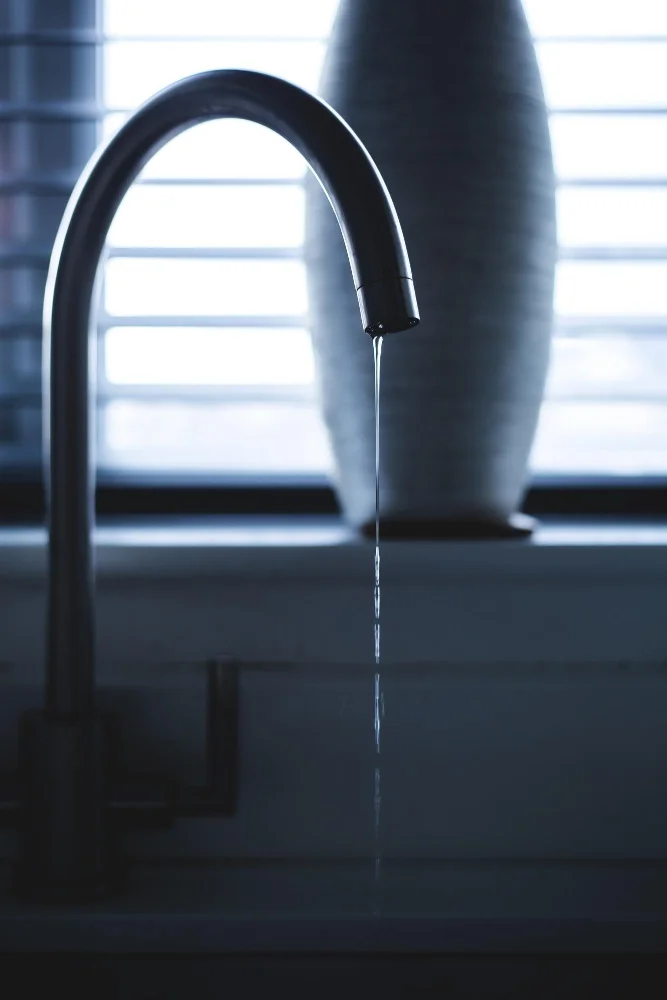
Some of the most common issues that can cause your kitchen faucet to stop working include water pressure problems, blocked aerators, worn-out seals and corroded valves. Malfunctioning cartridges and leaky handles are also frequent culprits behind a faulty faucet.
It’s important to note that some of these problems may require professional assistance or replacement parts. However, with proper troubleshooting techniques and basic knowledge about how faucets work, you can often fix many issues on your own without spending money on expensive repairs or replacements.
Water Pressure Issues
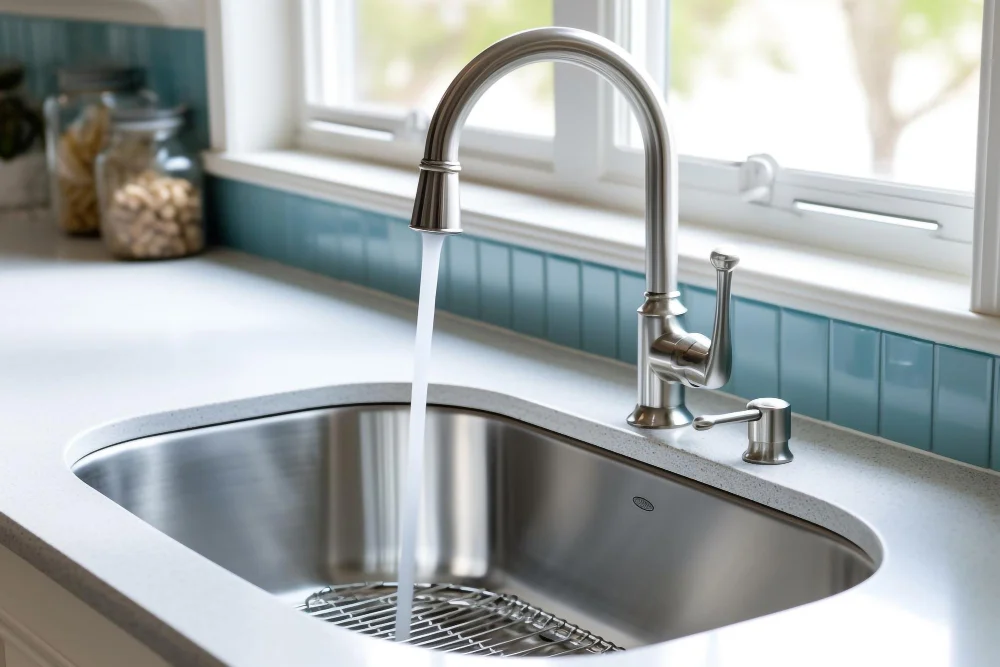
Low water pressure can make it difficult for you to carry out basic tasks such as washing dishes or filling up a pot with water. There are several reasons why you might be experiencing low water pressure, including clogged pipes, damaged supply lines, and debris in the water lines.
To troubleshoot this issue, start by checking other taps in your home to see if they are also experiencing low-pressure issues. If so, then there could be an issue with your main supply line that needs professional attention.
If only one tap is affected by low-pressure issues (in this case – the kitchen faucet), then try consulting with neighbors who might have experienced similar problems before and ask them how they resolved it.
Another possible cause of poor flow rate could be related to hot-water supply; check whether hot-water flows normally from other faucets or showers around the house.
Water Supply Issues

If there’s no water coming out of the faucet, it could mean that the main valve supplying water to your home is turned off or malfunctioning. In this case, you need to check if other taps in your house are also affected by low or no pressure.
If all faucets have low pressure, then it’s likely a problem with the municipal supply line. You can contact your local utility company and ask if they’re experiencing any issues with their system.
On the other hand, if only one tap has low pressure while others work fine, then there might be an issue with that specific fixture. Check for any visible leaks under the sink and ensure that all valves leading up to it are open.
In some cases, debris buildup in pipes can cause blockages resulting in reduced flow rate from faucets; flushing them out may help restore normalcy.
Blocked Aerators
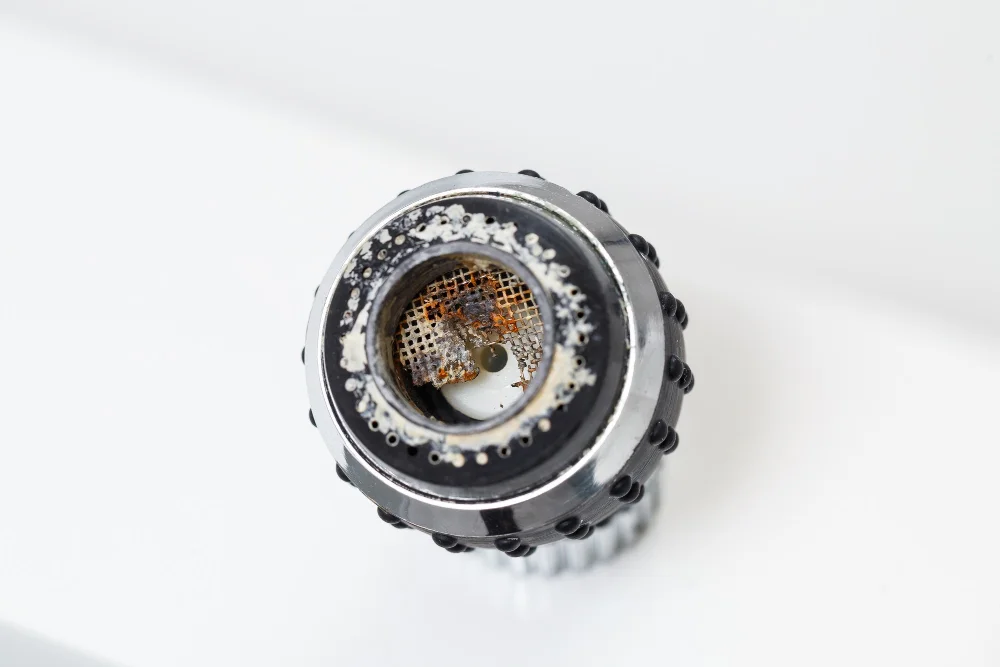
An aerator is a small mesh screen located at the end of your faucet that helps regulate water flow and reduce splashing. Over time, mineral deposits, debris, and sediment can accumulate in the aerator and clog it up, causing low water pressure or no water flow at all.
To fix this issue, you need to remove the aerator from your faucet using pliers or an adjustable wrench (make sure to protect its finish with tape). Then soak it in vinegar overnight to dissolve any buildup.
Rinse thoroughly with warm water before reattaching it back onto your faucet.
If soaking doesn’t work or if you notice significant damage on the screen itself during cleaning (such as holes), replace it entirely by purchasing an identical replacement part from your local hardware store or online retailer.
Worn-Out Seals
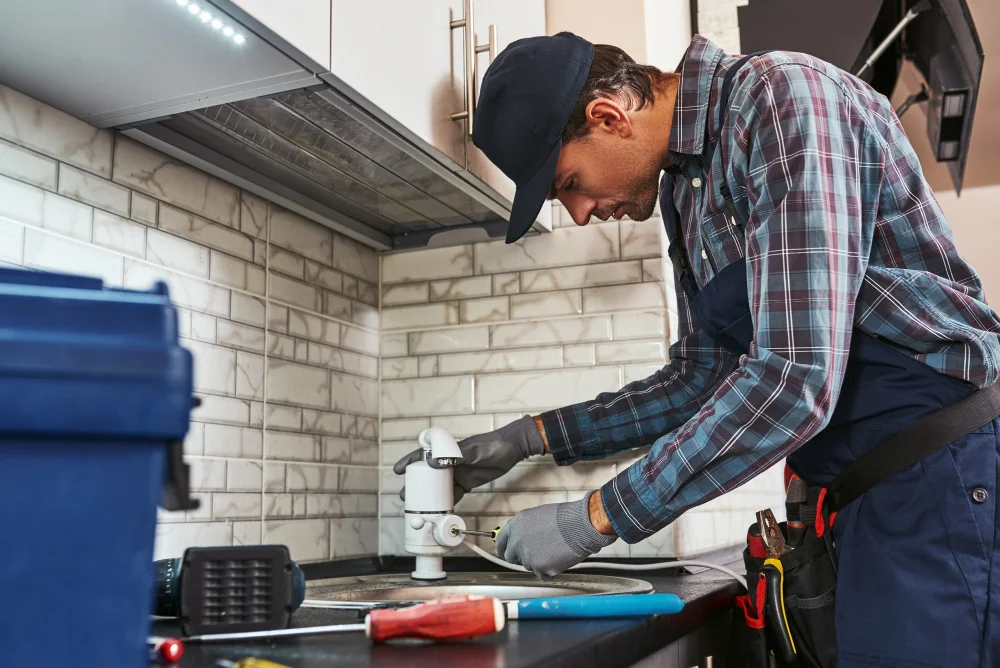
Over time, the rubber or silicone seals that prevent water from leaking out of the faucet can become damaged or deteriorate. This can cause leaks and a decrease in water pressure.
To fix this issue, you will need to replace the old seals with new ones. You can purchase replacement kits at most hardware stores or online retailers.
Before replacing the seals, make sure to turn off both hot and cold water supply valves under your sink.
Once you have turned off the valves, remove any decorative caps on top of your faucet handles using a flathead screwdriver and unscrew them using an adjustable wrench. Then remove any retaining nuts holding down each cartridge assembly before pulling it out carefully.
Next, inspect each seal for signs of wear and tear such as cracks or tears; if they are damaged beyond repair then replace them with new ones by following manufacturer instructions included in replacement kit packaging.
Corroded Valves
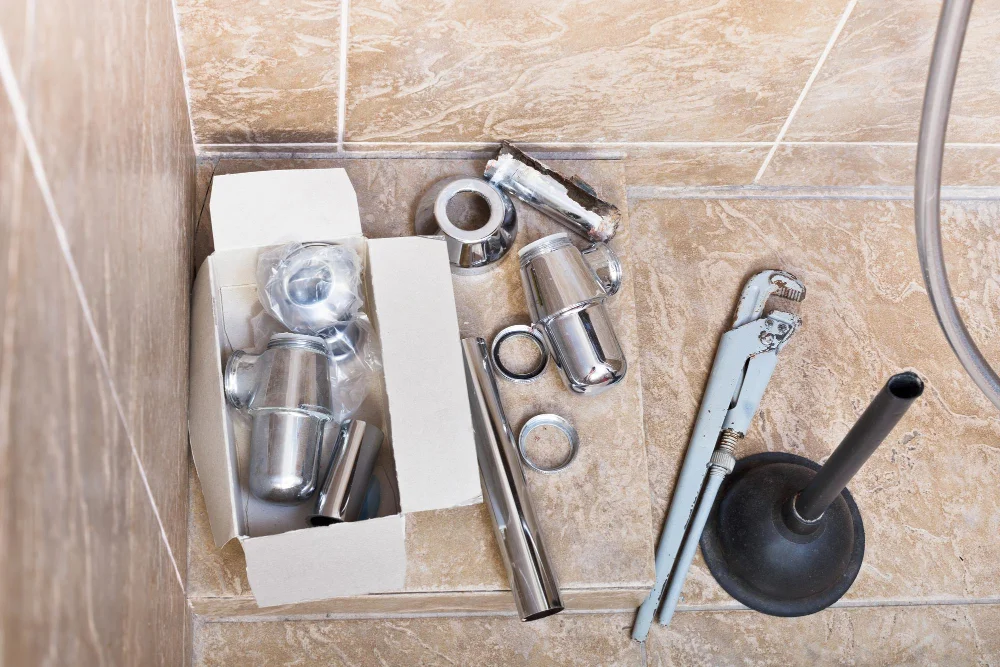
Over time, the metal components in your faucet can corrode due to exposure to water and air. This corrosion can lead to leaks or blockages that prevent water from flowing through the valve properly.
To fix this issue, you will need to replace the corroded valve with a new one. You can purchase replacement valves at most hardware stores or online retailers.
However, if you’re not comfortable doing this yourself, it’s best to call a professional plumber who has experience working with faucets.
Preventing corrosion is also important for maintaining your kitchen faucet’s longevity and functionality. To do so, make sure that you clean your faucet regularly using mild soap and warm water while avoiding abrasive cleaners that could damage its finish.
Malfunctioning Cartridges
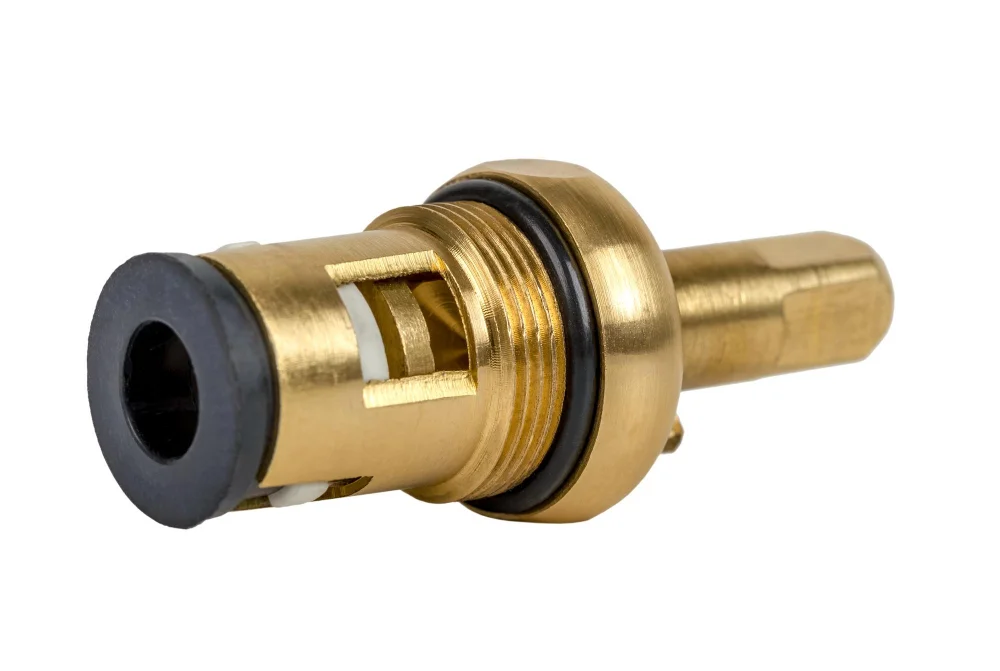
Cartridges control the flow and temperature of water, so if they malfunction, your faucet may not work correctly. A cartridge can become damaged or worn out over time due to regular use or mineral buildup in the water supply.
To fix this issue, you will need to replace the faulty cartridge with a new one that matches your faucet’s make and model. You can purchase replacement cartridges from hardware stores or online retailers.
Before replacing the cartridge, turn off both hot and cold water supplies under your sink by closing their respective valves. Then remove any decorative parts on top of your handle using pliers before unscrewing it counterclockwise with an adjustable wrench.
Once you have removed the handle, locate and remove any retaining clips holding down the old cartridge before pulling it straight up to remove it from its housing unit carefully.
Insert a new matching replacement into place while ensuring that all components fit snugly together without gaps between them before reassembling everything back in reverse order as earlier described above.
Leaky Faucet Handles
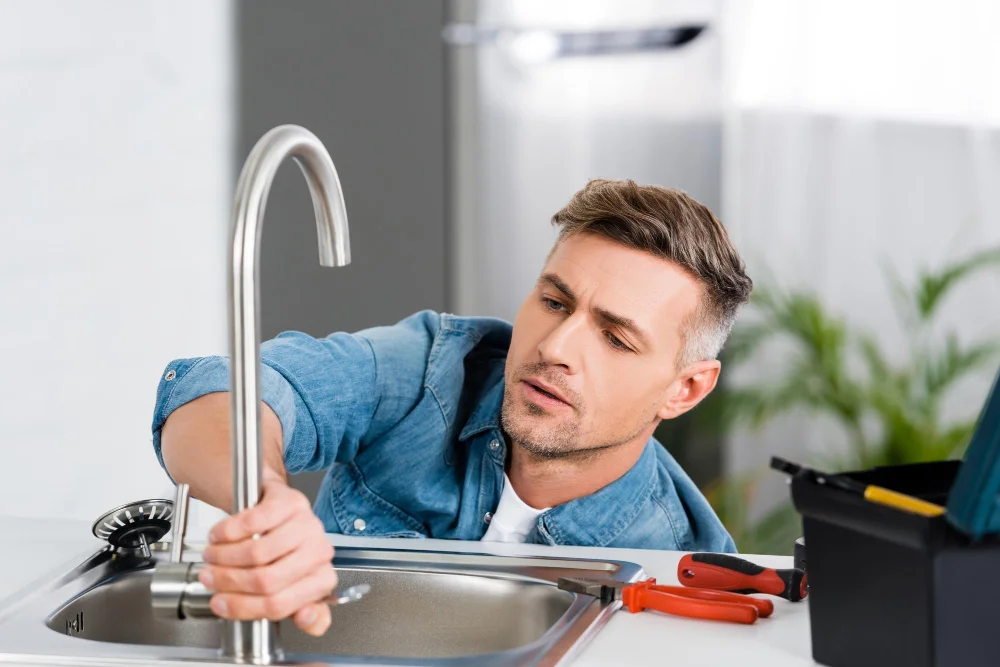
A leaky handle can be caused by several factors, including worn-out washers or O-rings, loose parts, or damaged cartridges. If you notice water dripping from your faucet even when it’s turned off, chances are there’s an issue with the handles.
To fix this problem, start by turning off the water supply to your kitchen sink and closing the drain stopper to prevent any small parts from falling down into it. Next, remove the decorative cap on top of each handle using a flathead screwdriver and unscrew them carefully.
Once you have access to all internal components of your faucet handles (washers/O-rings), inspect them closely for signs of wear and tear such as cracks or tears in rubber seals that could cause leaks over time. Replace any damaged parts with new ones before reassembling everything back together again tightly but not too tight so as not to damage anything else inside!
Damaged Supply Lines
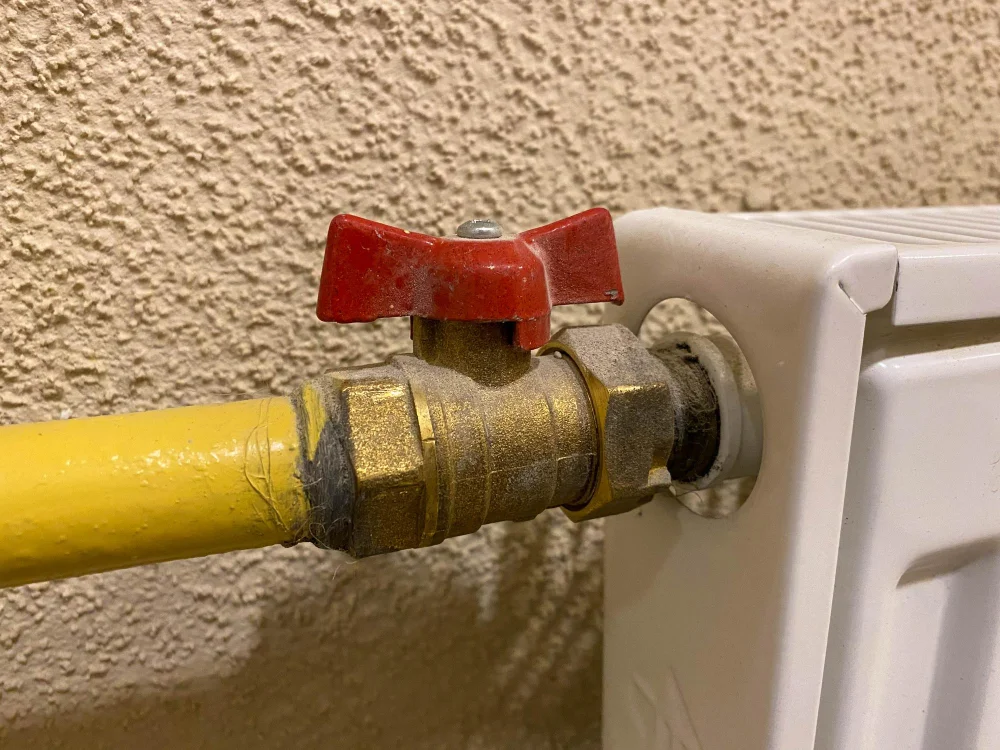
These are the pipes that connect your faucet to the water source, and they can become worn out or damaged over time due to age, corrosion, or external factors such as freezing temperatures. If you suspect that this is the issue with your kitchen faucet, turn off the water supply valve under your sink and inspect both hot and cold supply lines for any visible signs of damage such as cracks or leaks.
If you notice any issues with these pipes, it’s best to replace them entirely rather than trying to patch up individual sections.
Debris in Water Lines
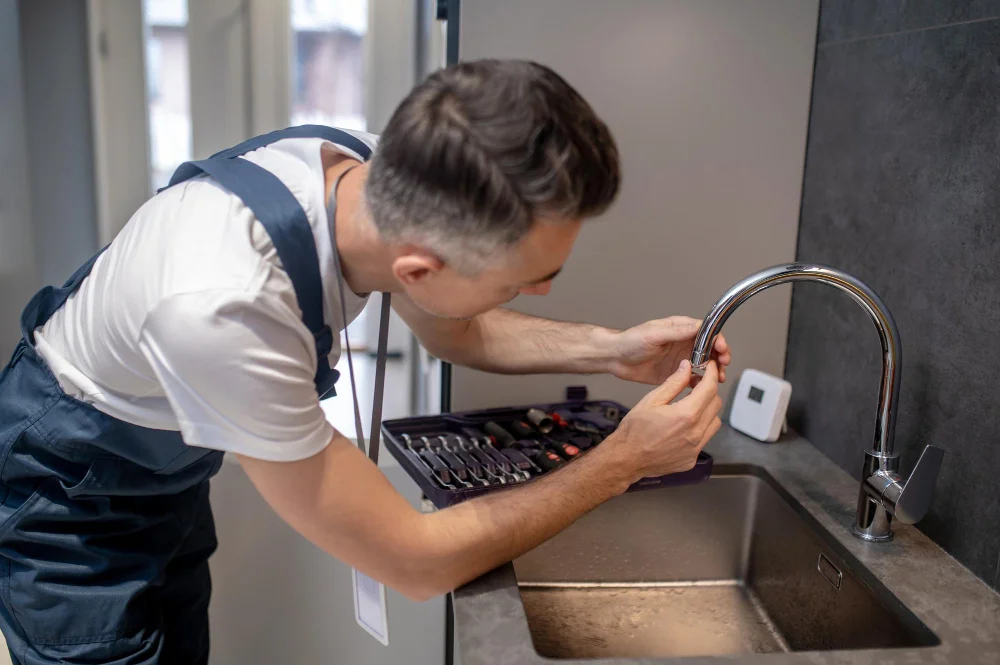
Over time, debris such as sand, dirt, and rust can accumulate in the water supply lines leading to your faucet. This buildup can restrict the flow of water or even block it completely.
To fix this issue, you will need to clean out the debris from your pipes. Start by turning off the main water supply valve and opening all faucets connected to that line until they run dry.
Next, remove any aerators or filters on your kitchen faucet and rinse them thoroughly with warm soapy water before reattaching them.
If cleaning out these components doesn’t solve the problem entirely then you may have more significant build-up further down in your plumbing system which requires professional assistance.
Wrong Faucet Installation
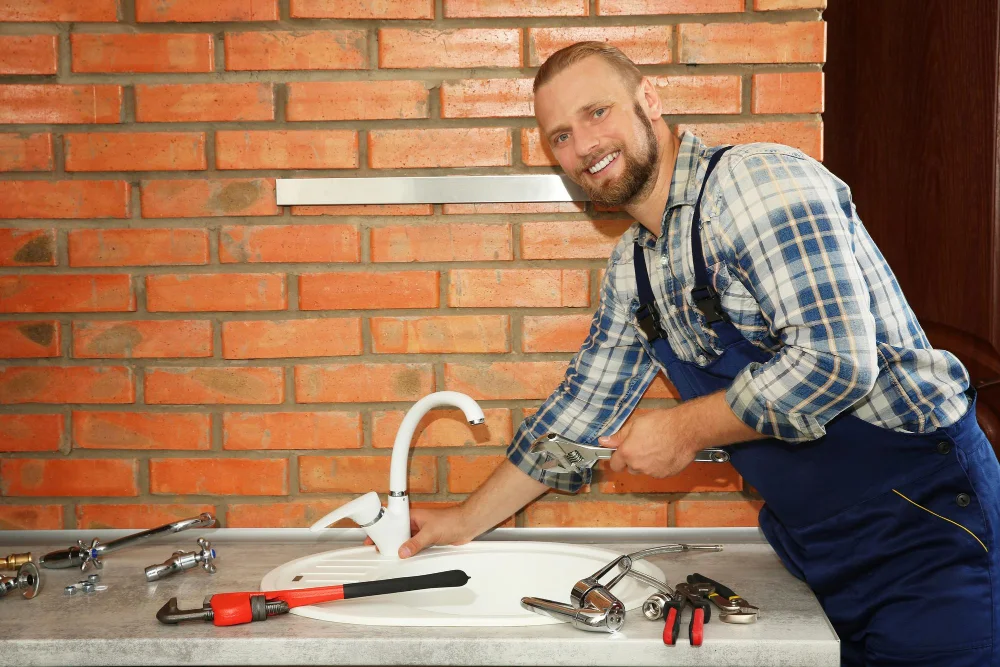
If the installation process wasn’t done correctly, it could lead to leaks or low water pressure. It’s essential to ensure that you follow the manufacturer’s instructions when installing a new faucet or hire a professional plumber if you’re unsure of what to do.
If you recently installed a new kitchen faucet and are experiencing problems with its functionality, check whether all parts were assembled correctly and tightened securely. Make sure there are no loose connections between the supply lines and valves as this can cause leaks.
In some cases, an incompatible fixture might have been used during installation leading to poor performance of your kitchen sink tap. Therefore, always make sure that any replacement part matches your existing plumbing system before making any changes.
Clogged Pipe

Over time, debris such as food particles, grease, and soap scum can accumulate in the pipes leading to your kitchen sink. This buildup can restrict water flow and cause blockages that prevent water from reaching the faucet.
To check if this is the problem, turn on other taps in your home to see if they are also experiencing low pressure or no water at all. If they are not affected, then it’s likely that there’s a clog somewhere along the line leading specifically to your kitchen sink.
You may try using a plunger or drain snake to clear out any blockages in these pipes yourself but be careful not to damage them further while doing so.
Checking Other Taps
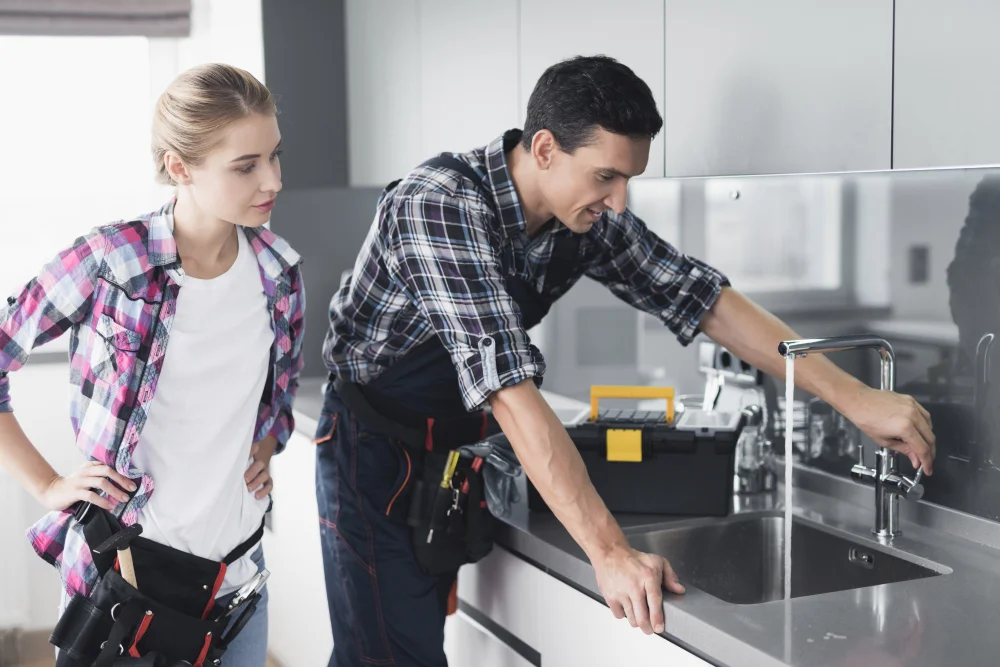
This step will help you determine if the problem is isolated to your kitchen or affects the entire house. If all faucets are not working, then there could be an issue with your water supply system that requires immediate attention from a professional plumber.
On the other hand, if only one tap is affected, then it’s likely that there’s something wrong with that specific fixture. Checking other taps can also help identify whether low water pressure is causing the problem or not.
In some cases, turning on another faucet may even fix a malfunctioning kitchen faucet by releasing air trapped in pipes and restoring proper water flow.
Consulting With Neighbors
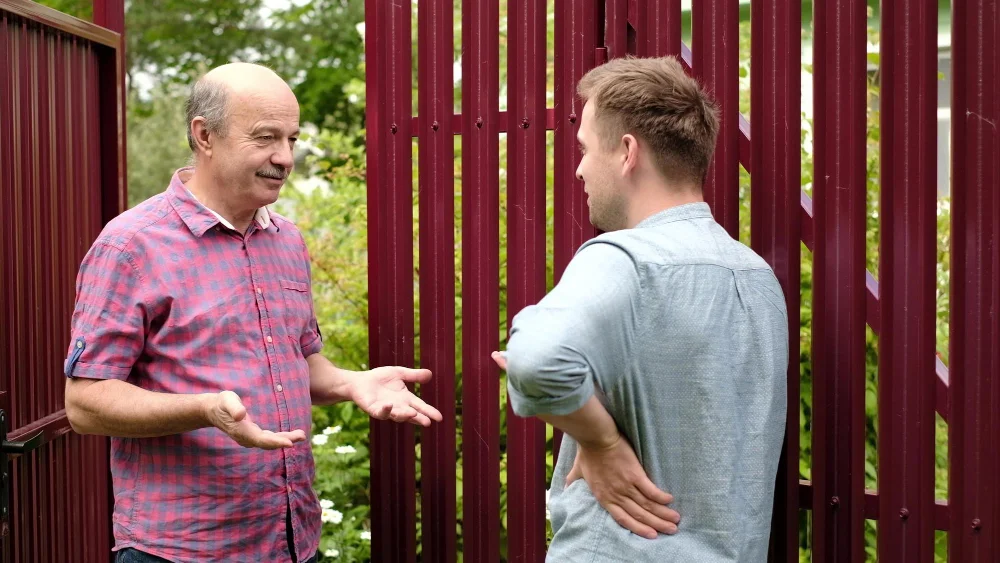
If they are experiencing similar issues, then there could be a problem with the water supply in your area. In this case, contacting the local water company would be necessary to resolve the issue.
However, if none of your neighbors are having problems with their faucets or water supply, then it’s likely that there’s an issue specific to your home plumbing system. At this point, calling a professional plumber would be advisable as they can diagnose and fix any underlying issues that may have caused the malfunctioning faucet.
Assessing Hot Water Supply
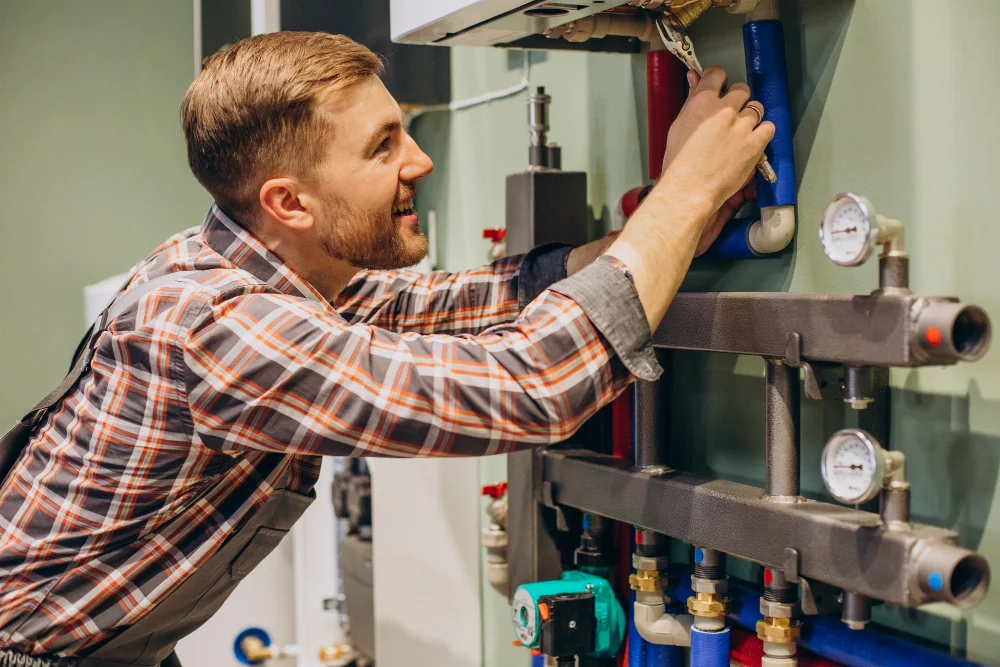
If you have an electric water heater, check if the circuit breaker has tripped or if the thermostat is set too low. On the other hand, if you have a gas-powered heater, make sure that it’s receiving enough gas supply and that its pilot light is lit.
If there are no issues with your water heating system, then it’s possible that someone else in your household may be using up all of the hot water before it reaches your kitchen faucet. This can happen when multiple people take showers or use appliances like dishwashers and washing machines at around the same time.
To assess whether this might be causing your problem, try running hot water from another tap in your home while checking for any changes in temperature at each location. If there isn’t enough warm/hotwater coming out from other taps as well then this indicates an issue with either heating system or plumbing lines leading to faucets which needs professional attention.
Troubleshooting Tips
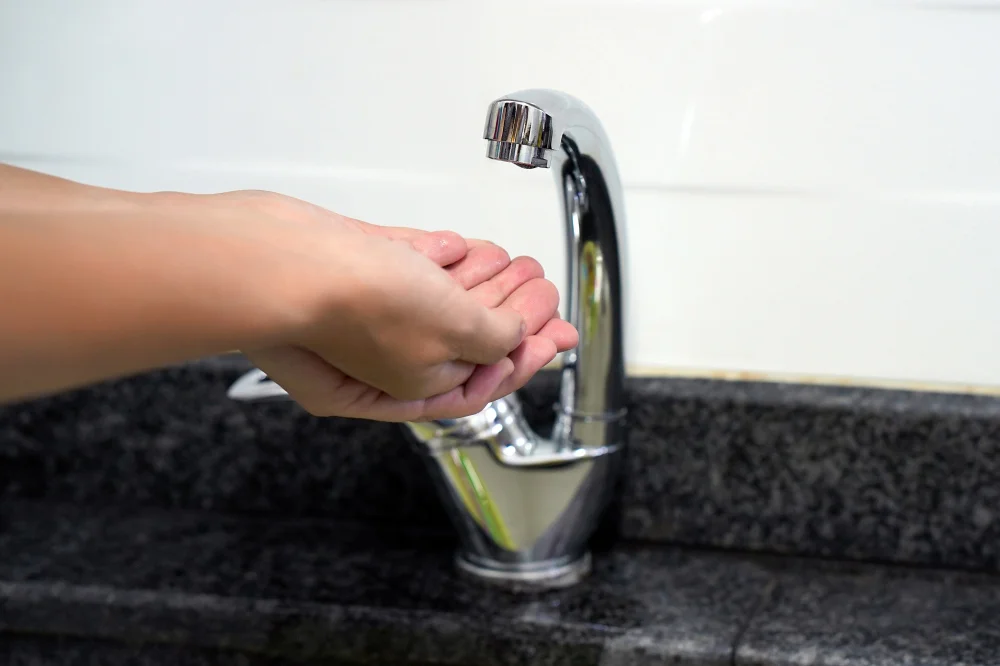
First, check if the problem is isolated to your kitchen faucet or if other taps in your home are also affected. If it’s only happening with one tap, then the issue is likely specific to that fixture.
Next, consult with neighbors and see if they’re experiencing similar problems. This could indicate an issue with the water supply system in your area.
Assessing hot water supply can also help identify potential issues. If only cold water comes out of the tap but not hot water or vice versa, this could be due to a malfunctioning valve or cartridge.
Another common cause of non-functioning faucets is debris buildup inside pipes and aerators. Cleaning these components regularly can prevent blockages from occurring.
When to Call a Professional
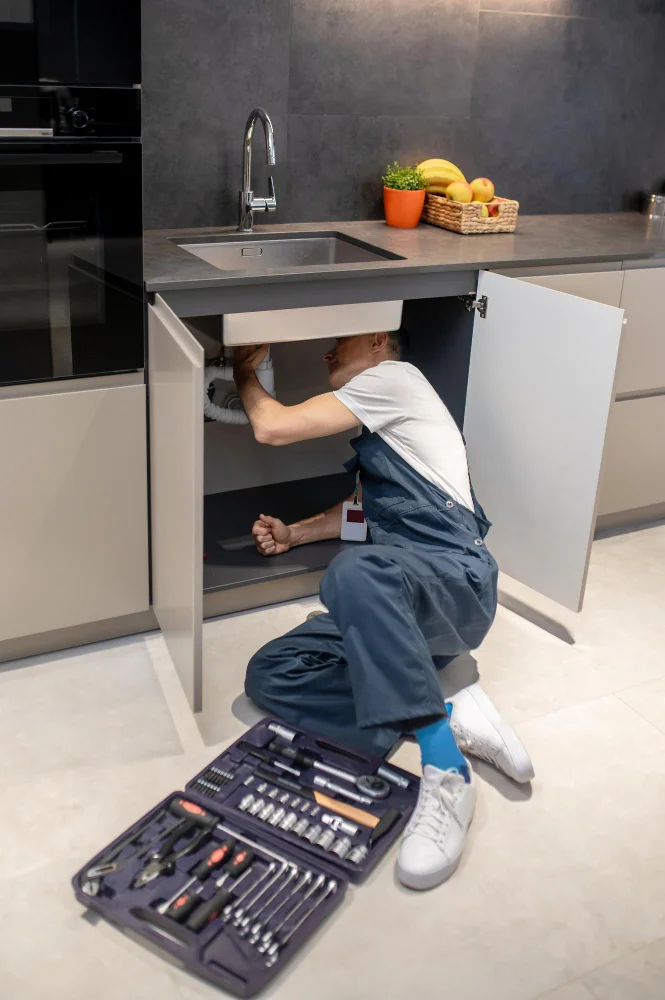
A licensed plumber has the expertise and tools needed to diagnose and fix complex plumbing issues that are beyond your DIY skills. Attempting to fix a complicated problem on your own can lead to further damage or even injury.
Some signs that indicate you need professional help include:
- Persistent low water pressure
- Leaking pipes or valves
- Strange noises coming from the faucet
- Visible corrosion or rust buildup
Remember, prevention is always better than cure when it comes to plumbing problems. Regular maintenance of your kitchen faucet can prevent major breakdowns in the future.
Preventive Maintenance
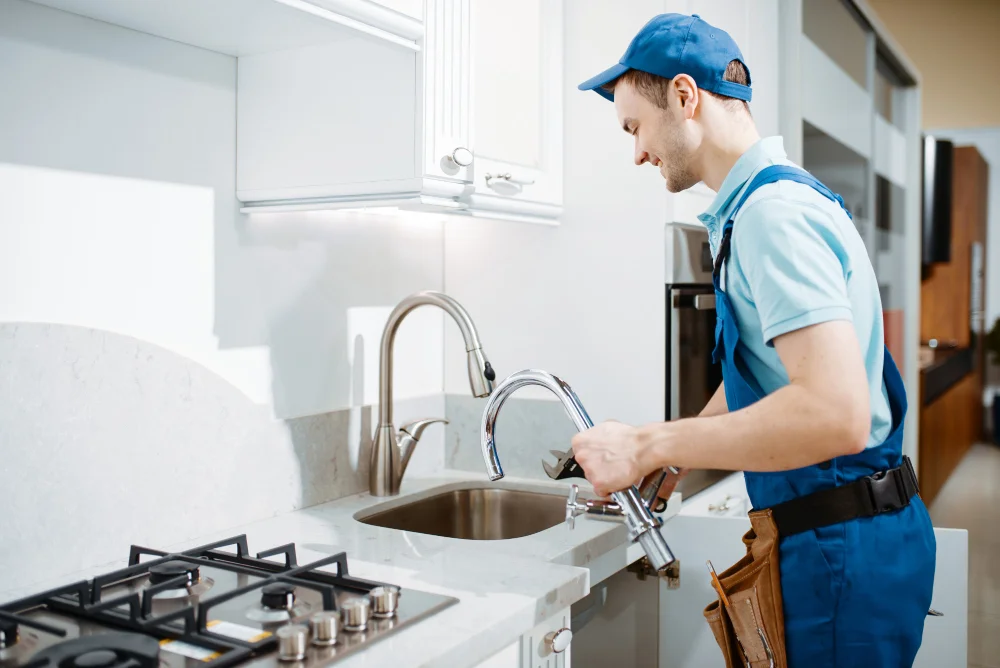
Here are some preventive measures you can take to avoid future problems:
1. Clean the aerator regularly: Over time, mineral deposits and debris can accumulate in the aerator, causing a decrease in water pressure.
To prevent this from happening, remove the aerator and clean it with vinegar or a descaling solution.
2. Check for leaks: Even small leaks can lead to bigger problems if left unattended for too long.
Inspect your faucet periodically for any signs of leakage and fix them immediately.
3. Replace worn-out parts: If you notice that certain parts of your faucet are starting to wear out or become damaged, replace them as soon as possible before they cause more significant issues.
FAQ
Why has my kitchen faucet suddenly stopped working?
Your kitchen faucet might have suddenly stopped working due to rust accumulation causing blockages within the tap.
Why is hardly any water coming out of my kitchen faucet?
Hardly any water may be coming out of your kitchen faucet due to a clogged or blocked faucet cartridge, caused by hard water build-up, leading to low water pressure.
What do you do when your faucet won’t turn on?
When your faucet won’t turn on, clean its inside with vinegar and a scrub brush, inspect for worn parts and metal shavings, and lubricate threads with plumber’s grease.
What are the common reasons for a kitchen faucet to lose water pressure?
Common reasons for a kitchen faucet to lose water pressure include clogged aerators, malfunctioning diverter valves, and issues with the water supply lines.
How can I troubleshoot a non-functioning kitchen faucet?
To troubleshoot a non-functioning kitchen faucet, check for clogs, cartridge issues, and water supply problems while also verifying proper installation.
Are there any home maintenance tips to prevent kitchen faucet issues?
One effective home maintenance tip to prevent kitchen faucet issues is to regularly clean the aerator, check for leaks, and tighten connections.




